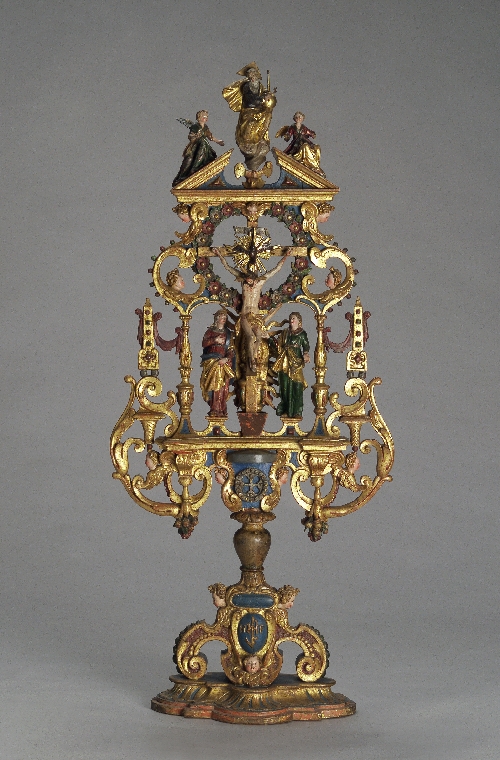NEUE RESIDENZ
Mozartplatz 1
5010 Salzburg
E Mag. Peter Husty
T +43-662-62 08 08-707
F +43-662-62 08 08-72
SCULPTURE
History
One of the first objects in this collection to arrive is the bust of the cathedral master builder Santino Solari, which was transferred to the museum from St. Peter’s Cemetery in 1844. The inventory grew in the nineteenth century, on the one hand through “cleansing” actions in churches and abbeys, which brought about the acquisition of numerous Gothic sculptures. On the other hand, urban expansion and the demolition of city fortifications, gates and buildings explain why many building fragments and marble coats of arms landed in the museum.
Collection range
The core sector of the collection consists in the extensive and high-quality holdings of Late Gothic sculpture. Later epochs are represented with some outstanding Baroque objects, also with a large quantity of objects that are more average in quality. The collection is not conceived as a quality collection but as documentation of sculptural works from the City and Land of Salzburg. The range extends from miniature portraits in plaster and wax to altars and monumental Baroque crucifixion groups and large-scale sculpture in the public space such as The Cardinal by Giacomo Manzú on Residenzplatz in Salzburg, the figure of St. Rupert in the fountain on the Behrens courtyard in St. Peter’s Abbey, also Paracelsus by Josef Zenzmaier, at present installed in front of the Celtic Museum in Hallein.
Inventory overview
Also in the collection are fragments of Gothic church accoutrements in the form of individual figures and architectural parts, as are seventeenth- and eighteenth-century figural sculptures. Fragments of building sculpture in the form of columns, bases and capitals range from the eleventh to the twentieth century. Several large stone coats of arms document the building activities of the Salzburg archbishops. Among the outstanding works beside Gothic sculpture such as the fragments of the so-called Emperor’s Monument by Hans Valkenauer are the model of a Marian column by Lukas von Hildebrandt, the Easter lamp from the cathedral by Johann Georg Hitzl, and the architectural and figural elements of the demolished outer Linzertor (gate) on Linzer Gasse.
Transparency and function
It is too little known that several monuments in the City of Salzburg belong to the inventory of the Salzburg Museum, for instance the coats of arms in the passages of the Mönchsberg garage. The collection documents the artistic activities of the archbishops and sovereigns with its portraits of Salzburg personalities, with the models for monuments and most of all with its many architectural fragments from across the centuries made of Untersberg and Adnet marble typical of Salzburg.


















